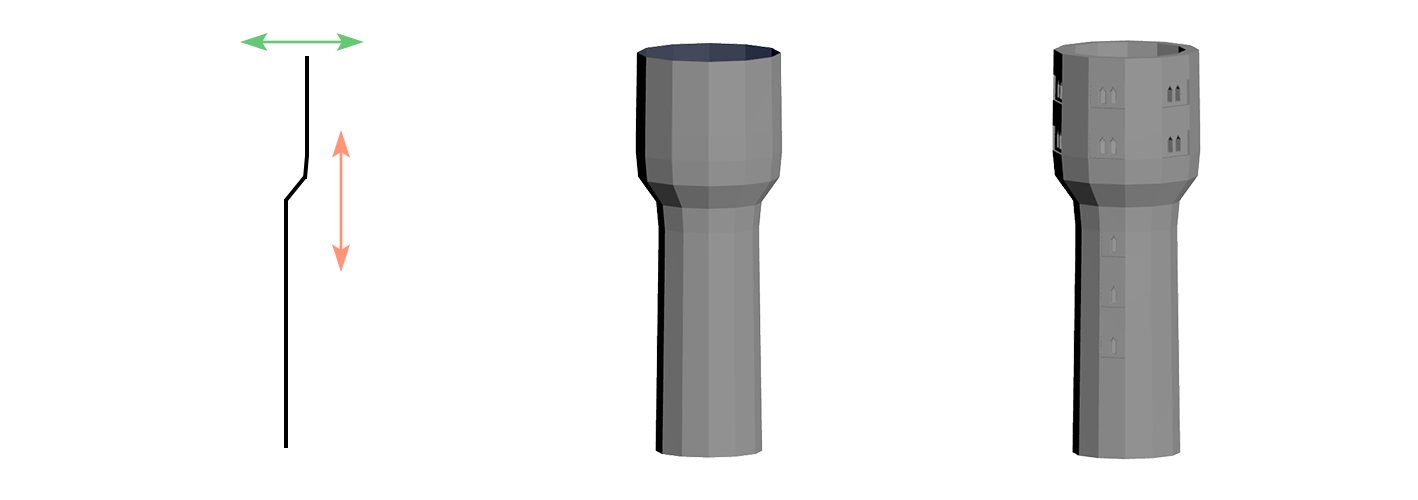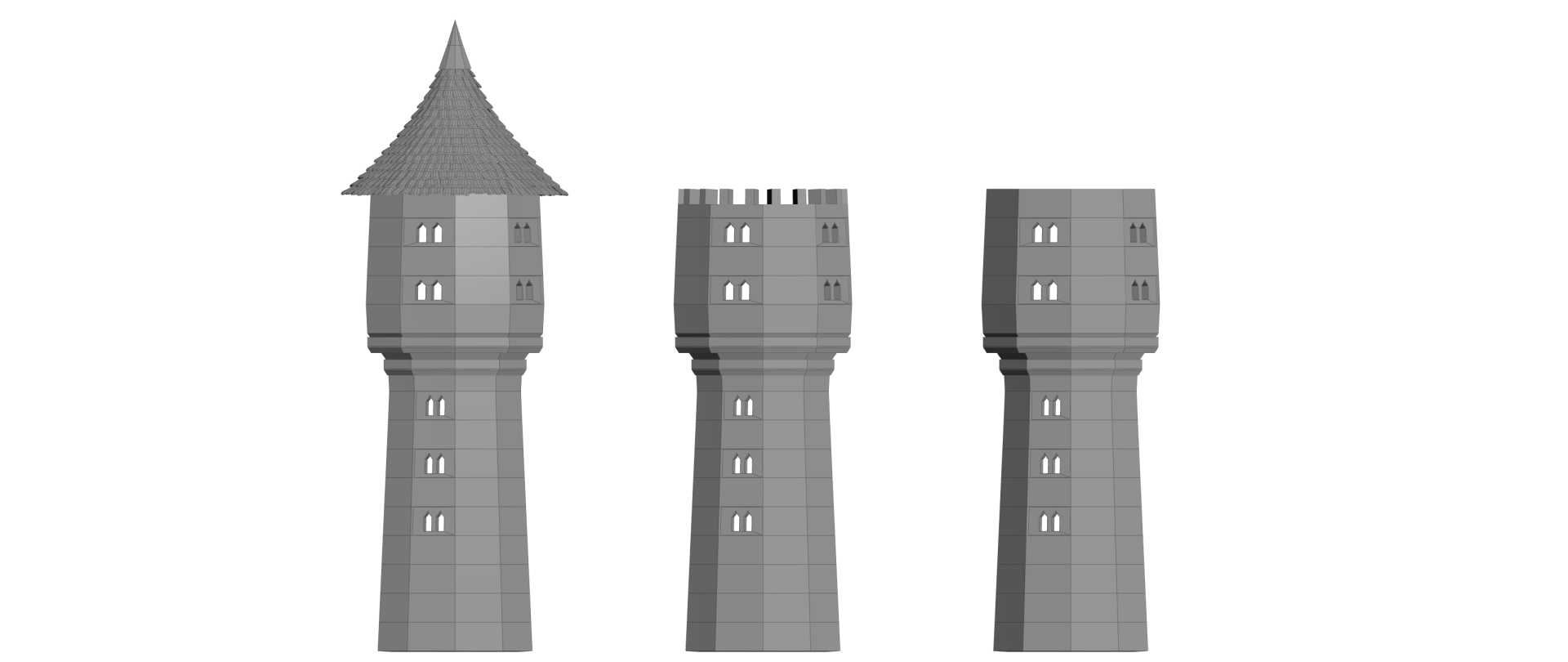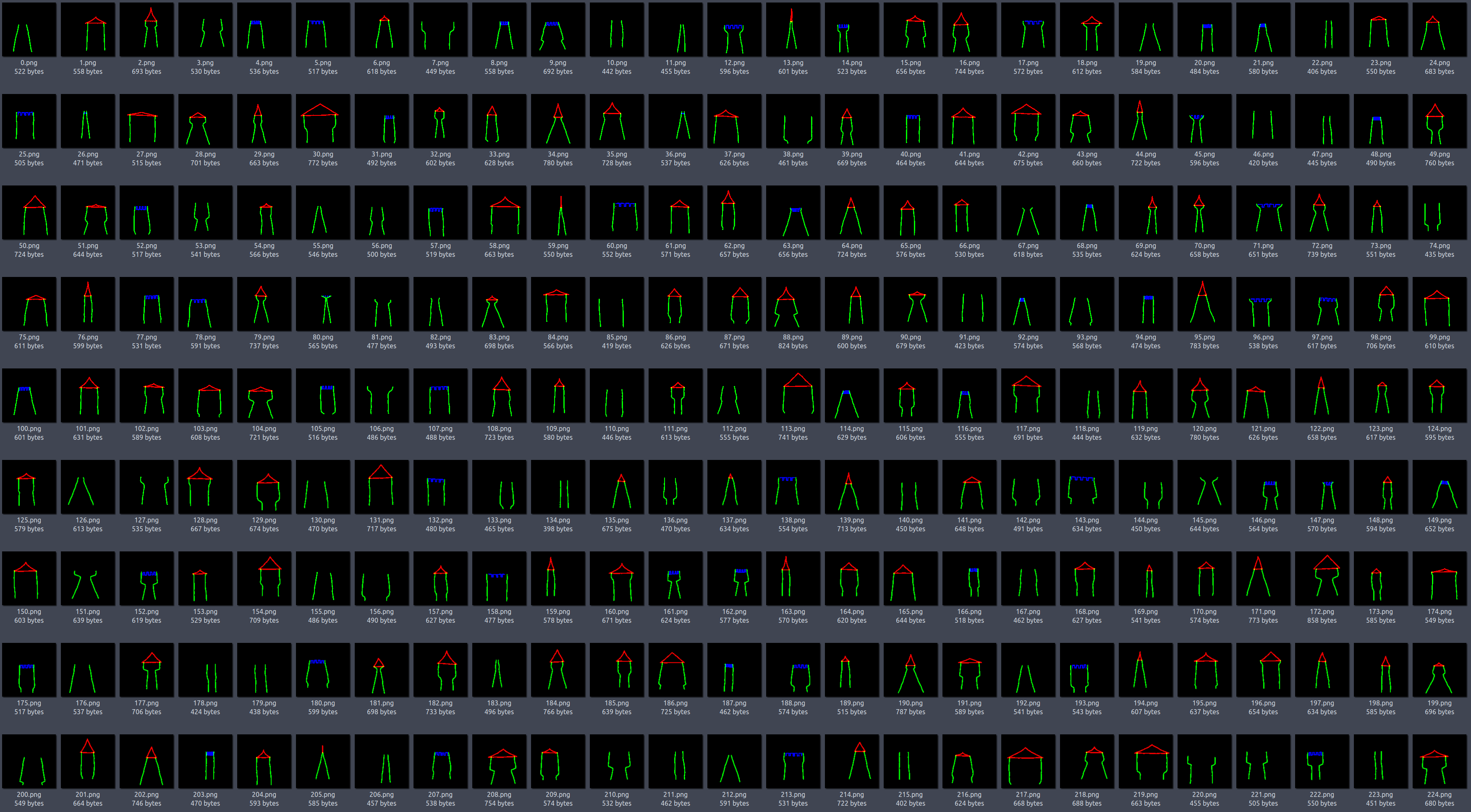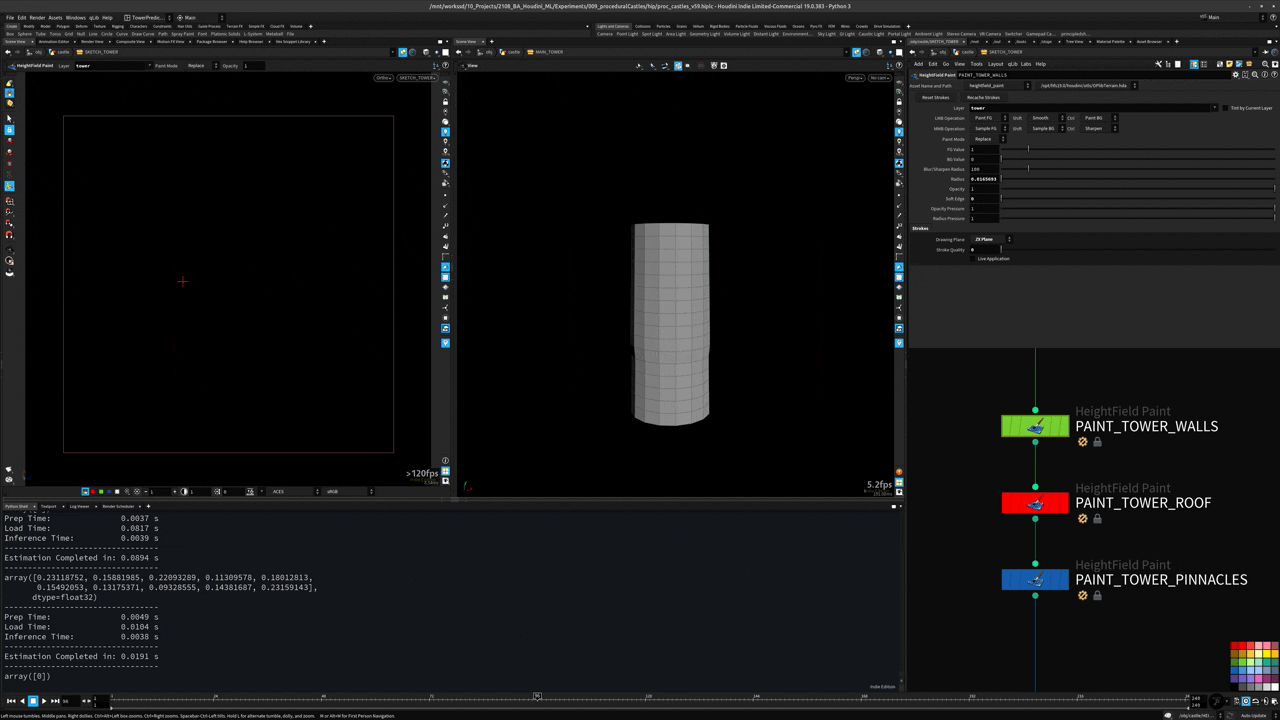Tower Sketcher
# Training a Neural Net to Understand Sketches
This is part of the ML Castles project and was created for my bachelor’s thesis.
# Concept
The basic idea was to create an HDA and train a neural net to translate rough pixel sketches into parameter values that produce the drawn shape when entered in the HDA.

# HDA - Procedural Tower Generator
The base of the system is this very simple HDA that generates a single tower. The user can set different parameters to control the shape. The Asset outputs a 3D model and a 2D sketch derived from the model.

 // base breakdown
// base breakdown
 // roof breakdown
// roof breakdown
 // roof types
// roof types
# Setup
To create the necessary training data I used PDG. It’s pretty straight forward to create almost infinite random variations of an HDA output and write them, or any part of their data, to disk. I generated 10.000 image-parameter pairs to train the network. The training process was also done inside of PDG in a python script node. The network was a combination of a CNN and a FNN.
.jpg)
The Inference process (Predicting new results) was done in SOPs by running an Image (stored on a heightfield/2D Volume) through a python SOP and feeding the predicted parameters back in the HDA.
# Data Synthesis and PDG
As mentioned above the data generation was done in PDG. The setup is pretty straight forward:
- create
nwedges for the parameters you want to randomize - randomized values get stored in the pdg attribute stream
- add slight offsets to sketch lines (noise) to get a more general/robust model
- render out 2d sketch of resulting tower
- fetch image path and attributes in python script and begin training
Here is a sample of the dataset:

# Results
 // gif plays at 3x speed
// gif plays at 3x speed

Since all the resulting values get clamped to a plausible range every sketch outputs a somewhat reasonable tower, which results in those rather incoherent pairs:
